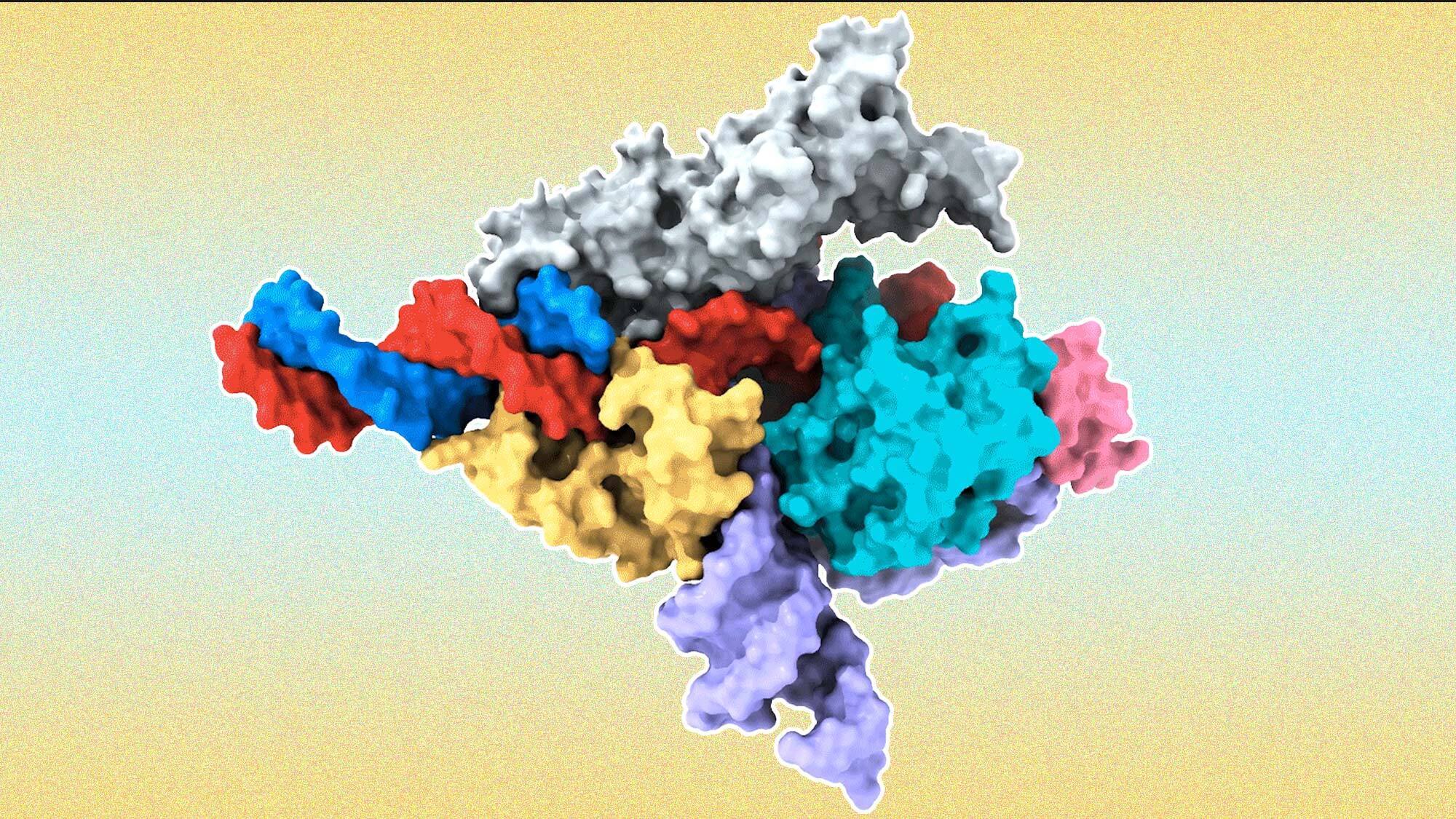

A team of researchers has uncovered a new biological editing system that could potentially be even more precise than CRISPR gene editing. It’s based on a protein called Fanzor, and this new finding is the first programmable RNA-guided system discovered in eukaryotes. The new RNA-editing system is described in a study published June 28 in the journal Nature.
[Related: CRISPR breaks ground as a one-shot treatment for a rare disease.]
Eukaryotes include fungi, plants, and animals whose cells have a nucleus. CRISPR was first discovered in organisms called prokaryotes, which are single-celled and do not have a nucleus. Discovering an editing system like this that works in eukaryotes could expand biological editing’s reach and possibly its precision.
The team shows how Fanzor proteins use RNA as a guide to precisely target DNA as well as how Fanzors can be reprogrammed to edit the genome of human cells. RNA serves multiple functions in the body, including coding, decoding, regulating, and expressing genes. The Fanzor system could also be more easily delivered to the body’s tissues and cells as therapeutics than CRISPR systems.
The study also shows that RNA-guided DNA-cutting mechanisms are present in both unicellular nucleus-lacking prokaryotes and multicellular nuclei endowed eukaryotes.
“CRISPR-based systems are widely used and powerful because they can be easily reprogrammed to target different sites in the genome,” co-author and biochemist at the Massachusetts Institute of Technology (MIT) Feng Zhang said in a statement. “This new system is another way to make precise changes in human cells, complementing the genome editing tools we already have.”
One of the primary goals of the Zhang lab is developing genetic medicines that can modulate human cells by pinpointing specific genes and processes. They are looking beyond CRISPR to see if other RNA-programmable systems exist in the natural world.
The team is building on a 2021 discovery of a class of RNA-programmable systems in prokaryotes called OMEGAs. That research highlighted some similarities between prokaryotic OMEGA systems and the Fanzor proteins in eukaryotes, and suggested that Fanzor enzymes could also be using an RNA-guided mechanism to target and cut DNA.
In the new study, the team isolated Fanzors from fungi, algae, and amoeba species, and a common clam called the Northern Quahog. A biochemical characterization of the Fanzor proteins showed that they are DNA-cutting endonuclease enzymes that use nearby non-coding RNAs known as ωRNAs. These ωRNAs target particular sites in the genome, and it is the first time this mechanism has been found in eukaryotes like the clam, according to the authors.
[Related: What is a pangenome? Scientists just released their first draft.]
“These OMEGA systems are more ancestral to CRISPR and they are among the most abundant proteins on the planet, so it makes sense that they have been able to hop back and forth between prokaryotes and eukaryotes,” co-author and postdoctoral fellow at the Zhang lab Makoto Saito said in a statement.
To investigate Fanzor’s potential as a future genome editing tool, the team showed that it can generate insertions and deletions at targeted genome sites within human cells like the cut and paste tool in a document. They found that the Fanzor system was initially less efficient at snipping DNA than CRISPR systems, but introducing a combination of mutations into the protein significantly increased its activity.
According to the team, the Fanzor system can be reprogrammed to target specific genome editing technology for future research and therapeutics, just like the current CRISPR-based systems. There are also more systems like this in nature just waiting to be found.
“Nature is amazing. There’s so much diversity,” said Zhang. “There are probably more RNA-programmable systems out there, and we’re continuing to explore and will hopefully discover more.”
